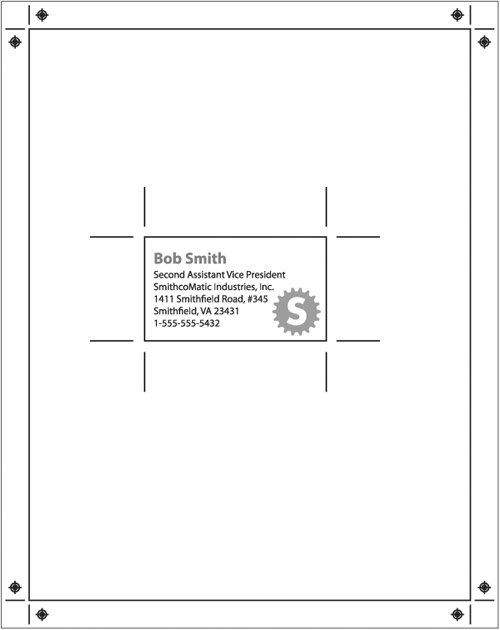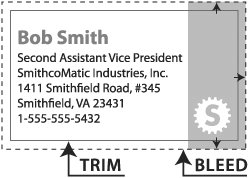One Size Does Not Fit All
| Even if you don't sew, you can nonetheless anticipate the unfortunate results of using a defective pattern. The old adage "measure twice, cut once" applies to any manufacturing process, whether it's sewing or printing (Figure 3.1). Figure 3.1. Careful planning when creating a pattern can mean the difference between being stylish (left) and facing public humiliation (right). Building your files without considering the finishing processes (like trimming and binding) can cost you money and delay your job. Consequently, the more you know about folding, trimming, binding, and imposition, the better prepared you'll be to correctly build files. Let's start with two dimensionswidth and heightand work our way up to the challenge of designing in three dimensions. Think of it as one of those fun, spatial reasoning games that you loved as a child. (Or maybe you didn't. In that case, you'll hate this part of the book.) And all games have rules.... Rule Number One: Build to the Correct Trim SizeIf you're creating an odd-sized piecesay, a 5by4 inch invitationdon't put it all alone in the middle of a letter-sized page. Create a custom page size that matches the final trim size of your piece. In a page layout program such as Adobe InDesign or QuarkXPress, specify the size as you begin the document (Figure 3.2). Figure 3.2. To specify a custom page size, enter the correct values in the Width and Height fields as you create a new file in InDesign (left) or QuarkXPress (right).
If you're using a drawing program such as Adobe Illustrator or Adobe (formerly Macromedia) FreeHand®, the page limits that you see are just imaginary paper. Only the actual drawing's dimensions count. For more information on the way illustration programs handle page size, see Chapter Ten, "Illustrator Production Tips," and Chapter Eleven, "FreeHand Production Tips." Why is this important? Take a simple business card as an example. The print service provider doesn't feed little individual 3.5 by 2 inch pieces of paper through a press to create cards one at a time. Your business card doesn't float alone in the middle of a press sheet as in Figure 3.3. Instead, multiple copies of the card are printed simultaneouslyimposedfor a press sheet, which is subsequently trimmed to final size. That's why it's important to supply artwork of the correct size (Figure 3.4). Prepress technicians need to position your artwork accurately in the imposed layout. If they have to modify your file to do so, it costs moneyand threatens your deadline. Figure 3.3. Incorrect: A single business card on an oversized page. Figure 3.4. Correct: A single business card built to correct size: 3.5 by 2 inches. If you supply business card art as a lonely card on a letter-sized page, a prepress operator will have to copy the card art into a new page of the correct size (or change the dimensions of the existing file) so it's correct for everything down the line. In addition to requiring an extra, time-consuming step, this also introduces the possibility of errornot copying some little detail or moving something in the process. Figure 3.13, later in this chapter, shows one method of imposing business cards. The imposition used by your print service provider might be different, depending on their press and the size of paper used. Rule Number Two: Provide BleedTrimming is the finishing process that chops the printed piece to the correct final size. Since this is a mechanical process, it helps to have some margin for error in both the printing and trimming processes. Consequently, any time there is artwork intended to extend to the edge of the page, it's necessary to provide bleedextra image beyond the edge of the true page size. Commonly, bleed extends one-eighth of an inch (.125 inch or 9 points) beyond the trim line, but your print service provider may request a different bleed value. As with all issues, it behooves you to check the print service provider's specifications as you begin the job. However, Rule Number Two does not invalidate Rule Number One, which stipulates that you should build to the correct trim size. Start with the correct trim size, and then add the extra image (or flat color) beyond the trim limits by yanking on the edges of the appropriate frames. In a page-layout program like InDesign or QuarkXPress, it's a simple matter to pull on the handles of image and tint frames to extend them beyond the page edges for sufficient bleed (Figure 3.5). Figure 3.5. Extending artwork to provide bleed. The document is built to the correct final trim size, and the bleed extends beyond the trim. In a drawing program, such as Illustrator or FreeHand, the visible page edge doesn't necessarily indicate the limits of what you can draw. Depending on how you export your artwork from Illustrator or FreeHand, objects beyond that edge may be maintained, or they may be eliminated. This behavior is particularly confusing when you're trying to make sure that you're building your artwork to the correct size, with appropriate bleed. For specific information about handling this issue, see Chapter Ten, "Illustrator Production Tips," and Chapter Eleven, "FreeHand Production Tips." Rule Number Three: Stay Away From the EdgeYou may have your heart set on that adorable doggie paw print border, but placing it too close to the edge or fold may result in disappointing results if there's any error in printing, folding, or binding. The closer your artwork is to the trim edge, the smaller the margin (literally) for error, and the more obvious any inaccuracy will be. What to do? Don't place artwork perilously close to the edges (both internal and external). But, if you just must, make the margin as wide as possible to camouflage any problems. A small trimming error is less obvious against a larger total margin (Figure 3.6). Which leads us to Rule Number Four. Figure 3.6. In an ideal world, your cute little paw-print border will print and trim perfectly. But a slight misregister during printing, combined with binding and trimming errors, can produce disappointing results (middle). The effect is exaggerated for dramatic effect, but you get the idea. A larger margin (right) makes it easier to camouflage a binding error. Rule Number Four: Follow the Print SpecificationsYour print service provider should provide folding and trimming specifications to guide you as you create your work, including such information as:
|
EAN: 2147483647
Pages: 132



